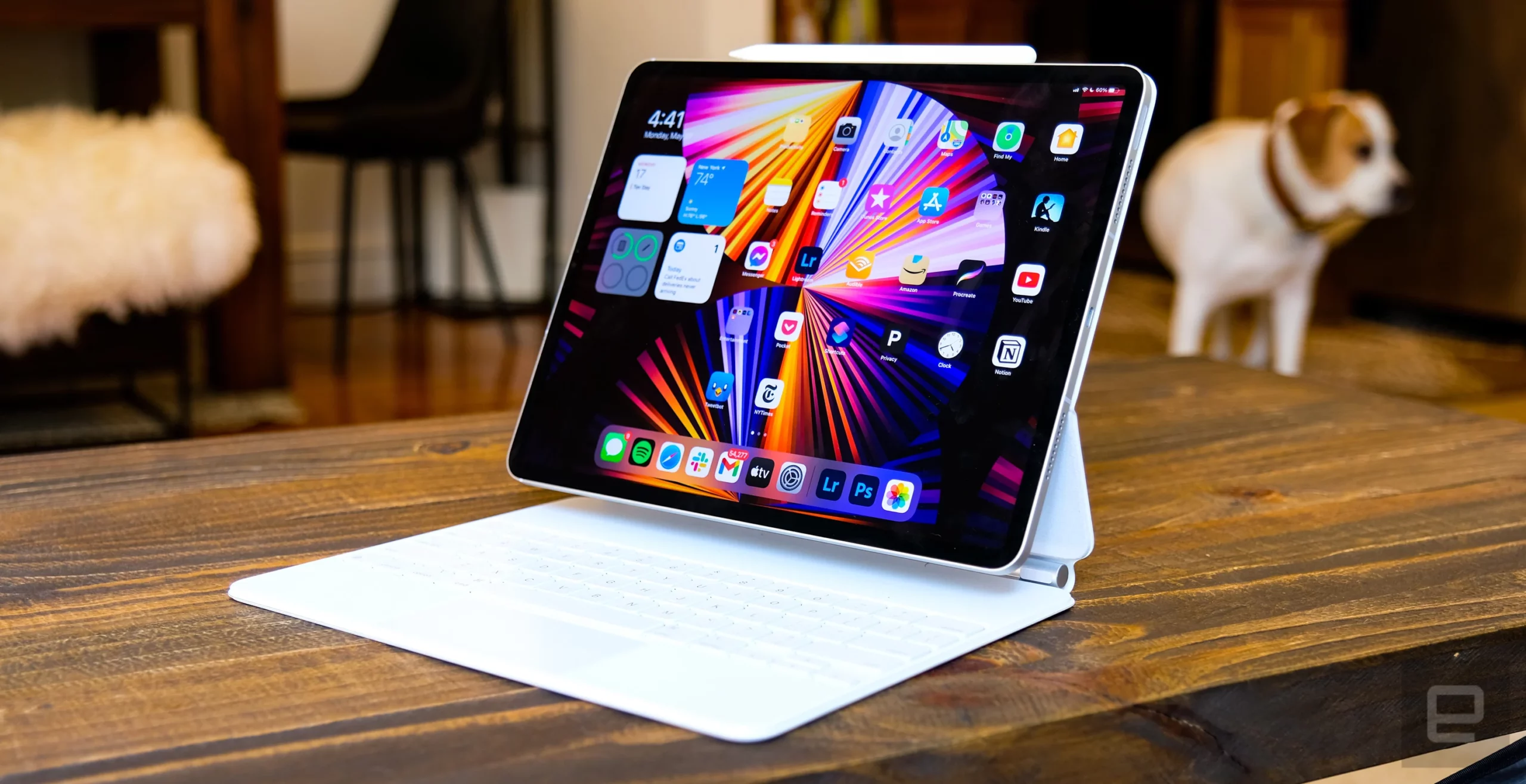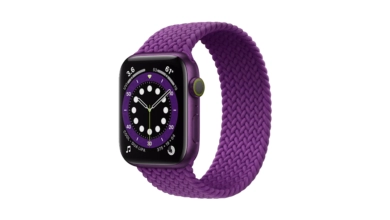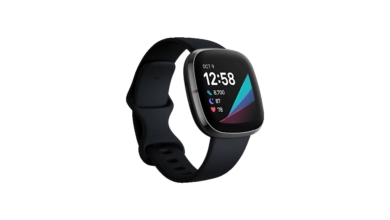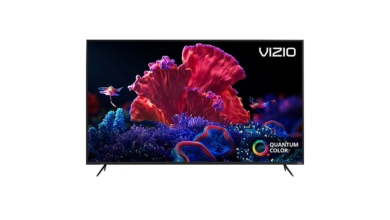2021 iPad Pro
Apple's hardware has overtaken its software.
When it comes to Apple’s new iPad Pro, I haven’t been able to get rid of the following thoughts: Firstly, this could be Apple’s best portable computer yet. You know what I mean? In fact, the iPad’s chipset is identical to that found in Apple’s latest MacBook Air, MacBook Pro, and even iMac models. A tablet with 5G and a screen that rivals Apple’s laptops is unheard of. There was a time when Tim Cook declared that Apple had a vision for the future of computing with the iPad, and now that vision seems to be taking shape.
My second unchanging idea is that because this machine is so powerful, it’s begging for more robust software. But for now, the new iPad Pro is merely a ridiculously powerful tablet, which is either good or bad depending on your perspective.
Configurations
Both the 11-inch and the 12.9-inch iPad Pro are available in several sizes with an array of storage options, including a new 2TB storage tier that is just ridiculous for a tablet. Instead than going through each of these models one by one, we’ve put together a convenient chart showing how much each one costs.
| 128GB | 256GB | 512GB | 1TB | 2TB | |
| 11-inch iPad Pro (Wi-Fi) | $799 | $899 | $1,099 | $1,499 | $1,899 |
| 11-inch iPad Pro (Wi-Fi + Cellular) | $999 | $1,099 | $1,299 | $1,699 | $2,099 |
| 12.9-inch iPad Pro (Wi-Fi) | $1,099 | $1,199 | $1,399 | $1,799 | $2,199 |
| 12.9-inch iPad Pro (Wi-Fi + Cellular) | $1,299 | $1,399 | $1,599 | $1,999 | $2,399 |
The 12.9-inch iPad Pro with 1TB of storage and a 5G radio was supplied to us by Apple for testing. The Apple Pencil and Magic Keyboard aren’t included in the $2,000 price tag. Obviously, you can get a great laptop for less than that, but it’s worth noting that a similarly specced 13-inch MacBook Pro is $100 less expensive.
Hardware and design
Although the design of this year’s iPad Pro is nearly identical to that of the 2018 and 2020 models, don’t expect to hear much from me about it. The most noticeable physical difference between this Pro and its predecessors is its feel.
Compared to the previous model, the new one is a little thicker and heavier, making it significantly less pleasant to handle for long periods of time. This year’s 12.9-inch iPad Pro doesn’t allow me to hold it in one hand for long periods of time. A comparable MacBook Pro weighs more than a Magic Keyboard strapped to this device. It’s not a huge difference, but it’s enough to get me thinking about which computer device I want to bring around with me at all times.
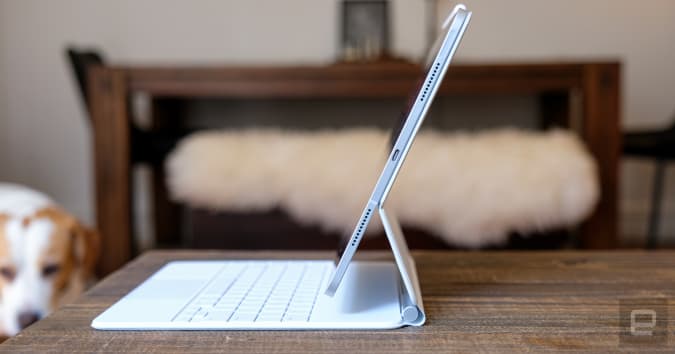
For a gadget as portable as an iPad, that’s not ideal. However, things aren’t as awful as you might think. As a starting point, the larger chassis means that the iPad Pro’s dual-camera hump on the rear doesn’t protrude as much, so the tablet doesn’t wobble on a table. According to reports, Apple’s first-generation Magic Keyboard is still compatible with this year’s iPad Pro, despite the public outcry. It’s not perfect, but if you already possess a Magic Keyboard, you don’t need to hurry out and get a new one.
According to Apple, the new Liquid Retina XDR display necessitated a thicker iPad Pro since it occupies more space than Apple’s previous LCDs. Still, the iPad Pro’s increased bulk is generally worth it because of all the extra features Apple crammed into this device.
For starters, our review unit had a 5G radio, which helped me stay connected when my apartment building was hit by an electrical fire and lost power and internet access for a few days. (Brooklyn, I think?) While I’ve found that my overall 5G experience hasn’t been significantly faster than on LTE, the brief moments I spent sitting in Bryant Park on a mmWave network were rather enjoyable.
A 12-megapixel ultra-wide front-facing camera has allowed for some of the best-looking — and oddest — FaceTime sessions I’ve ever been on from Apple. Center Stage, a new feature that uses machine learning and a wide field of view to keep your face at the center of the screen at all times, is the reason behind this. It’s a little strange at first, and I’m still not used to it, but it does an excellent job of panning and zooming so that others can see you clearly when you’re speaking.
If you try to fool it by sneaking in at an angle, or if you’re not even near the iPad itself, it still does the thing. Even as I bobbed and weaved to capture my producer’s dog’s attention, the camera continued to track my face while I shot our review video from a distance of approximately four or five feet. To put it succinctly: It’s a great solution.
Still, there are a few idiosyncrasies to contend with. Like a GIF of a slow-motion reaction, FaceTime’s camera slowly moves in on your face when you open it. Center Stage has been criticized by at least one person I’ve called on the iPad Pro, but it may be more of a “me” issue. Furthermore, Apple’s camera position still feels a little ridiculous in an era where Zoom and FaceTime calls are almost as common as text messages. To be honest, the shorter top edge of the tablet has historically made it easier for the tablet’s front-facing sensor to be squeezed in. In light of how much this new iPad weighs and the prevalence of landscape-oriented cameras in today’s video conversations, though, you’re going to want to use that camera while the iPad is propped up horizontally at least once. This means that some of your video chats will look a little less than professional.
Lets talk screen
Just about everyone knew it would have a better screen, but few people expected the new iPad Pro to employ the M1 processor. A new Liquid Retina XDR display from Apple has arrived after months of speculation, and it’s a lot better than expected.
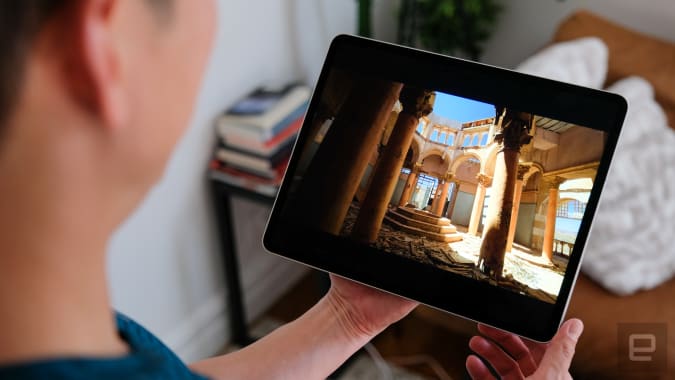
You may not be a fan of marketing jargon—and who is?—so let’s have a look at the name first. The LCD screen in this device, as opposed to the OLED screens used by Apple in the iPhone 12 series, is referred to as “liquid.” “Retina,” on the other hand, refers to Apple’s revolutionary mini-LED backlighting system, while “XDR” refers to the enhanced dynamic range made possible by this technology. Although this method to screen design has been employed by TV makers for years, Apple maintains that this screen was a particularly difficult one to build. Thousands of tiny LEDs had to be precisely positioned, and the optical films had to be redesigned to fit and look nice. Then again, it does look good, but only in the right context.
For the most part, I wasn’t anticipating much of an improvement, and I was right at least some of the time. When using Google Docs or browsing Safari, the screen’s maximum brightness is 600 nits, and it refreshes at 120 Hz, much like the previous iPad Pro. HDR content, such as explosions or spectacular visual effects, can reach 1,600 nits in maximum full-screen brightness when watching movies and videos. To put it another way, Apple’s backlighting method results in a darker screen and even brighter areas. You can’t help but notice the difference. Videos seem better on this iPad, and that might be enough to justify its price for those who absolutely need it.
This change is only noticeable if you have a different iPad to compare it to, so let’s be clear: The screens Apple uses in prior generations of the iPad Pro, including devices like the iPad Air, are already really damn fantastic.
Moreover, it all depends on the situation. It is unlikely that you will notice any difference if you spend most of your time reading articles or solving crosswords. You may edit your 4K HDR film or whatever you want if you’re the type of creative expert Apple is definitely targeting. Everything looks great while you’re editing, and even better after you hit export.
Put to good use
Apple’s choice of chipset is what sets this iPad Pro apart from the rest. Apple’s new desktops have the same M1 CPU, with either 8GB or 16GB of RAM, as does the new iPad.
If you’ve been following Apple for any length of time, you’ll know exactly how unusual it is that the firm just states that our review device has 16GB of RAM. The number of times I’ve asked Apple to confirm the amount of RAM on a particular iPhone or iPad I’m evaluating is uncountable, and they always simply shake their heads and say “we don’t really speak about that type of thing.” If this is the case, it signifies a new approach to iPads from Apple.
Even though I’m not coming into this review completely unprepared, I’ve already tested the M1 in two MacBooks, and I’ve already been impressed by how well Apple’s silicon stack-up against that of other companies, such as Intel.
Devindra Hardawar, our PC reviewer, has previously noted that the M1 is incredibly quick, and it has handled everything I’ve thrown at it without a hitch. Divinity: Original Sin’s big-budget AAA version, Genshin Impact, and GRID AutoSport ran perfectly. Even with a ton of transitions and effects, it was a breeze to put up long, meandering 4K films. A 4GB Photoshop file’s individual layer manipulations were painless, which was a welcome surprise considering the file creation process slowed my entry-level M1 MacBook Pro down to a crawl when I first opened it. Nothing in the App Store, if anything, would be above the iPad Pro’s capabilities, so that’s a given. For me, synthetic benchmarks don’t give the complete story, so I tend not to use them as much as I used to, but these are extremely telling.
| iPad Pro 2021 | iPad Pro 2020 | iPad Pro 2018 | Mid-2018 MacBook Pro | Ryzen 7 3700X Gaming PC | |
| GeekBench 5 CPU (single-core) | 1720 | 1124 | 1117 | 1089 | 1261 |
| GeekBench 5 CPU (multi-core) | 7291 | 4710 | 4674 | 3960 | 8105 |
| GeekBench 5 Compute (Metal and OpenCL) | 21445 | 9745 | 9180 | 7181 | 59993 |
| Premiere Rush 4K-to-1080p export (in minutes) | 5:37 | 6:07 | 6:58 | 18:27 | 4:56 |
Here, it’s clear there’s a great deal of potential. It would be a waste of money if you bought one solely to use it as a tablet. In fact, that’s what the iPad Air is all about. To get the most out of an iPad Pro, you’ll likely need to be a creative professional. Even so, I’m not sure you’d notice a tremendous difference across the board if you were to implement this strategy.
In order to get a taste of the iPad Pro’s creative abilities, I stitched together many 4K video snippets from earlier evaluations in LumaFusion and exported it. 14 minutes and 20 seconds later, the 2020 iPad Pro had completed its task. After 14 minutes and 12 seconds, a fresh M1 in a 2021 iPad Pro completed the test. There isn’t much of a leap. Then, in Adobe Premiere Rush, I ran a similar experiment, except this time I exported the movie in 1080p at 30 frames per second rather than its native 4K resolution. However, this time around, the difference was more obvious but not spectacular. Compared to last year’s iPad Pro, the new model completed the task in just 5 minutes and 37 seconds. In addition, Apple stated that “the previous iPad Pro was previously optimized to encode and decode real-time video” and that the video engine in the M1 had the same capabilities.)

Although the M1 makes this iPad Pro the most powerful tablet ever produced, it may not always feel like a game-changer because of the additional horsepower. Because developers haven’t had time to adapt their iPad apps for Apple’s new M1 chipset yet, we won’t know for a long what Apple’s new chipset can achieve until we see it in action.
Even Apple’s programmers are affected. Multitasking has improved greatly, mouse and trackpad support is now commonplace, and Safari now behaves like a desktop-grade browser. It’s been a long time coming, but iPads are finally more than simply iPhones. That’s a lot of advancement, but Apple’s software needs to keep up with the machine’s power.
Even though it would be fantastic to have some sort of Mac-like operating system on a tablet like this, it’s not something I expect Apple to accomplish any time soon. In theory, it’s possible, but Apple hasn’t expressed an interest in it in any of our interactions. That’s great with me; iPadOS can shine on its own merits. For the creative professionals Apple serves, multi-window multitasking and better support for professional video formats would be a big help.
A good time to highlight that this iPad Pro has Thunderbolt capability, which means you can connect it to external displays and transport data more quickly across Thunderbolt-compatible devices. Apple’s software, on the other hand, gets in the way. I’d love to add a second monitor to the setup, but for the time being it just displays what’s on the iPad. Faster data transfers are fantastic, but the iPad’s limited Files app may be a real hassle at times.
As of this writing, Apple’s Worldwide Developer Conference (WWDC) has yet to take place. It’s not out of the question that Apple will show off new software that takes advantage of the iPad Pro’s increased processing power.

Battery life is the last thing we need to discuss. As expected, Apple claims a single charge will provide you 10 hours of use, and I was able to do that several times without trouble. There is, however, a way to drain the iPad Pro’s battery substantially more quickly without a lot of work. Actually, I’ve done that more than a few times without even realizing it.
Reading articles on Safari, viewing movies on YouTube, browsing through old photos, and paying my taxes were some of the things I did over the weekend. That’s about as typical of tablet use as it gets, except from TurboTax. Even still, it took less than five hours for the iPad Pro’s battery to drop to 10%. This may have been caused by a number of circumstances, including: It’s common for review iPads to have poor battery life in the first few days of use because of the process of restoring them from backups. However, I suspect this wasn’t the problem, given that I was able to clear Apple’s 10-hour battery estimate a few times. It’s not like it’s completely unheard of to manually adjust the screen’s brightness to between 50 and 100 percent during that time, so it’s not like I was really out of the ordinary.
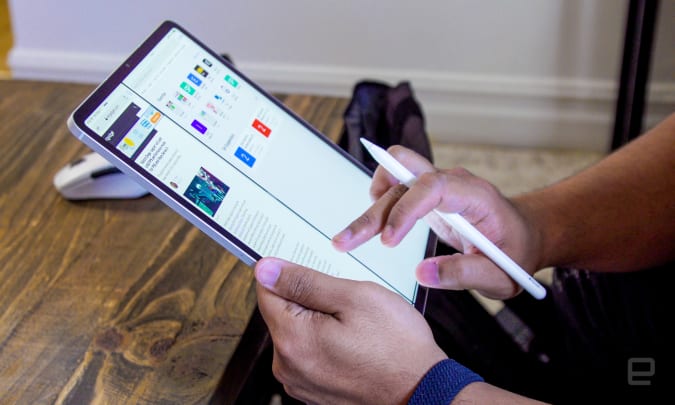
Wrap-up
No doubt this is the best and most stunning iPad Apple has ever produced, and it has enough power to last at least a few generations. As long as you don’t mind splashing out large sums for high-quality goods and services, go for it! Don’t worry if that’s not the case for you, because the iPad Air is still the finest iPad for most people. Do me a favor and wait till Apple unveils all of its new products at WWDC before making a decision.
2021 iPad Pro Review
Performance - 9.7
Design - 8.7
Cost - 9.2
9.2
9.2/10 Total Points
Incredibly high-performing with a beautiful screen but heavy and comes with a misplaced front camera.

